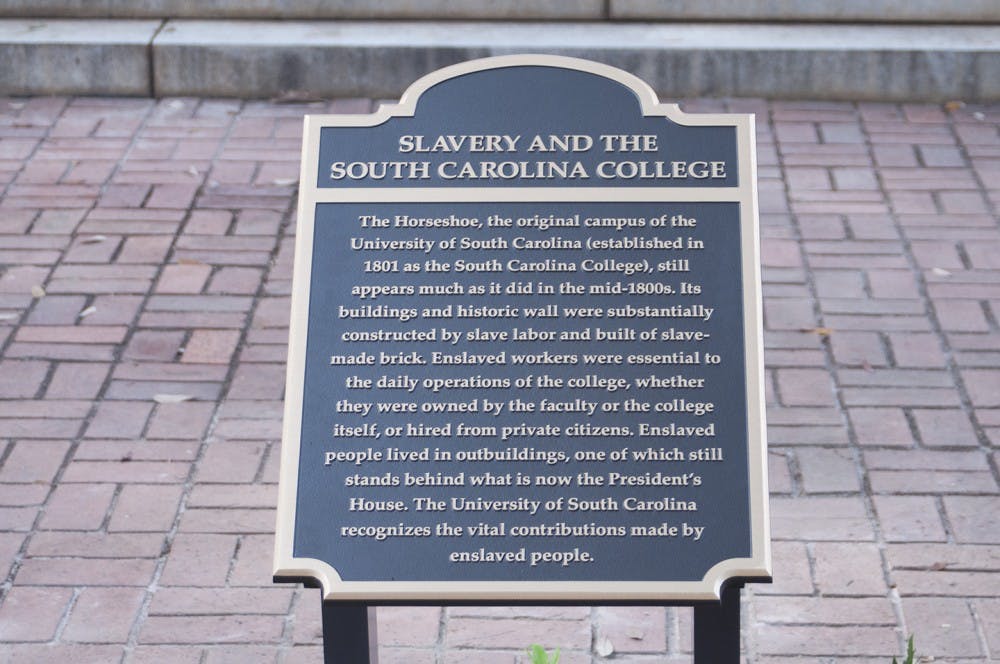Abraham, Amanda, Anna, Anthony, Charles, Henry, Jack, Jim, Joe, Lucy, Mal., Sancho and his wife, Simon, Toby and Tom are the sixteen names inscribed on one of two new plaques unveiled on the Horseshoe in a ceremony Tuesday morning. It is a not a complete list of every slave who lived and worked at South Carolina College, but like the overall project it is an attempt to reconcile with USC's complicated past in some way.
The names are included on a plaque marking the last standing slave quarters on the Horseshoe, located by what is now the President's House. The second plaque, entitled Slavery and the South Carolina College, directly states the work that slaves did to build USC's original campus.
The plaques honor one of the requests made by 20/20 Vision protesters in 2015, a fact not lost on Student Body President Ross Lordo. The fourth-year public health student lauded those protesters and their impact in his address at the dedication.
"Fulfilling the fervent request of our students is of the utmost importance," he said. "It's with great pride to be able to say that our university's administrators, historians and students collaborated on this collective effort."
20/20 Vision's impact was also mentioned by history professor Bobby Donaldson in his address at the event. Donaldson, who leads USC's Center for Civil Rights History and Research, participated in the 2015 walkout. On Tuesday, he also took a moment to recognize his own slave roots.
"Today I come not simply as a member of the faculty of the University of South Carolina but also as a proud descendant of enslaved people of this state," he said. "Today we gather in spirit and in truth."

Donaldson also acknowledged the complexities of a recognition like this. He highlighted the relationship between Thomas Cooper, one of USC's early presidents and the namesake of Thomas Cooper Library, and his slave Sancho. He highlighted how well-regarded Sancho was, but that even well-loved men like Cooper saw Sancho as an "exception."
University President Harris Pastides also addressed that Tuesday's commemoration was a complex event. He described himself as "conflicted" about how to feel on the occasion and about how to properly express his gratitude to the slaves who once lived behind his home.
"We are here as students, as teachers, as colleagues, as neighbors united in desire and united in need, in need, to give far belated thanks and recognition to those persons who toiled during the foundation of the college and during its first 64 years," he said.
Congressman Jim Clyburn was scheduled to speak, but he was unable to attend due to commitments in Washington. Donaldson took his place on the roster, and other speakers included Columbia's Mayor Pro Tempore Tameika Issac Devine. Members of USC's Dance Company also performed.
The plaques are the culmination of years of research by USC students and professors.
The event concluded with a procession to the markers, giving attendees the chance to read the conclusion of their inscription: "Naming these individuals is an effort to remember all of those who made significant and substantial contributions to the University of South Carolina."

